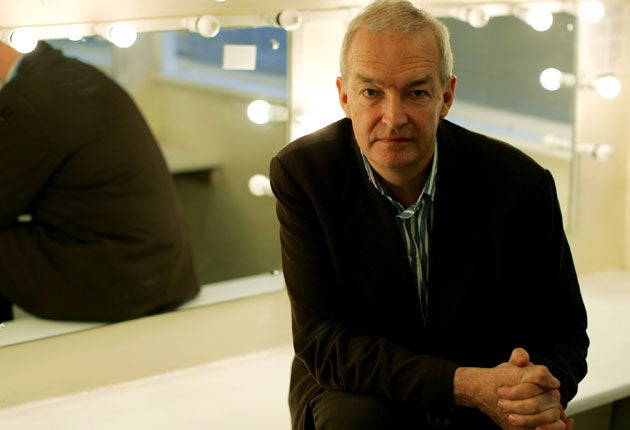Gaza: War, from a distance
When Jon Snow went to report on the conflict in Gaza, he was barred from entering the conflict zone, along with other Western journalists. It's wrong, he says

There have been two versions of the assault on Gaza played out over the past three weeks. One is the moderated account aired in the West; the other is the unexpurgated account of civilian deaths filmed in vivid close-up inside Gaza.
Has the Western account, restricted by the Israeli ban on journalists in the conflict zone, been so reduced as to dull the scale of protest? Has the volume of images of death injury and destruction played and replayed in the Arab media served to radicalise and enrage the Islamic world still further? Thus creating a gulf so unbridgeable that it defeated even the passage of a unanimous UN call for a ceasefire? I want to take you on a personal journey that I made to the region last week.
I am standing on the so-called "hill of shame" – a strange bump of terrain with three trees on top and a cascade of camera's tents and television dishes pouring down the other side. This is as close as the world's media has come to the Israeli invasion of Gaza. I have been unable to clarify whose "shame" the hill celebrates. Is it the stream of ordinary Israelis who come to cheer the booms of Israeli bombs and shells and the plumes of resulting smoke? Is it the shame of reporters stymied in their attempts to reach Gaza? Either way it has made me think again about war reporting.
People talk about the smell of cordite and the first-hand contact with fear. The Israeli blockade of Gaza and the exclusion of all journalists from the conflict emphasise, in a way that I've not really understood before, how important it is for those who report the horror of war actually to experience what they're communicating.
The noise and distant smoke of war in this spot, perhaps a mile back from the fence with Gaza, is simply a tableau, because I feel no fear and I can see no victims and hear no cries.
Later, I see on al-Jazeera the aftermath of those attacks: wailing women running in the streets, carrying the wrapped remains of tiny children. And somehow I remained detached, no closer an observer than if I were in my own living room in London.
Had I been on the ground in Gaza, I would have found out the baby's name, talked to its father, perhaps been to the home – made that human emotional connection between the death of a child and our own living experience. The thing that binds us together and shocks us as humans.
Wrapped remains and wailing women shock, but do not connect in the same way. We see the image, we know it's bad, but we do not experience the emotion. When the Israelis exclude the media, they know what they are doing.
By the next day, I have spoken to two al-Jazeera correspondents by video link on the roof of their studio complex in Gaza City. But as the Israeli military communications unit reports that they have started another phase of this invasion, venturing ever deeper into the urban areas of Gaza, the al-Jazeera reporters could tell me very little either. They can see little of the ground force activity and have to depend on the doctors in the hospital to tell them the human consequences of what has happened.
Such is the nature of this conflict. And it is one the like of which I have never had to cover before. The access has never been so absolutely barred.
I move from the hill to nearby Sderot. This is the front line the Israeli government press office wants me to cover. There is a hole in the bus shelter roof caused by one of the random and ill-guided rocket attacks. Israel's Channel 10 runs blanket coverage of their impact upon Israel's civilian areas. At the time of writing, three Israelis have been killed in these latest attacks, while the army has claimed the lives of more than 1,000 Gazans.
This is the fog of war; full access to the consequences of Hamas attacks, but no direct access to the carnage resulting from the Israeli assault on Gaza. It's a war in which the propaganda machines have been in full cry. The Israeli Defence Forces have uploaded more than 30,000 "action clips" on to YouTube and elsewhere. The Arab media has streamed horrific close-ups of wounds and dead bodies that cannot be seen on British television. Meanwhile, Hamas leaders remain in hiding inside Gaza, with Western journalists unable to interview them or hold them to account for their attacks.
As with every military conflict, the inevitable first casualty is the truth. It is caught in a pincer movement of lack of access and our own regulations, which forbid the most searing images from airing on the dominant mainstream media. The consequence is that the Arab world is seeing a vastly different account of this war from that which we are seeing. That presents a dangerous dynamic for the future.
'Unseen Gaza' is on Channel 4 on 22 January at 11.05pm
Join our commenting forum
Join thought-provoking conversations, follow other Independent readers and see their replies
Comments
Bookmark popover
Removed from bookmarks